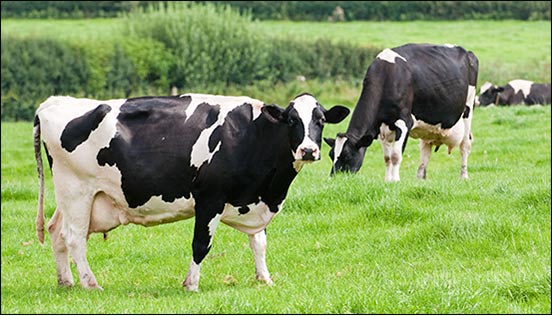
Dairy Influence on Beef Markets
Dairy animals contribute a significant portion of total animal slaughter
and beef supply.
Beef is a byproduct of the dairy industry and rarely has a major influence on dairy industry production decisions. However, dairy animals contribute a significant portion of total animal slaughter and beef supply. The impact of dairy on beef markets varies over time depending on long-term trends and short-term market conditions in both beef and dairy markets. This article summarizes the dairy industry’s impact on beef production in the 20 years since 1996.
The dairy cow herd has been relatively stable during the last 20 years, varying less than 4% from 9.0 million to 9.3 million head. By contrast, the beef cow herd has varied by more than 18% from 29.0 million to 34.5 million head during the same period. Dairy cows as a percent of all cows have averaged 22.3%, but have been at a record high of 24% in 2014 and 2015 as a result of low beef cow inventories.
The nature of dairy production means that basic herd dynamics are very different for dairy compared to beef. Dairy cows are culled more quickly, so dairy herd turnover rates are much faster. Dairy cow slaughter averages 30% of the Jan. 1 inventory of dairy cows each year, compared to less than 10% for beef cows. On average, the number of dairy replacements held each year is about 47% of the cow inventory. This represents about 48% of the estimated dairy calf crop and is nearly all the heifers born to dairy cows. This compares to beef herds where replacement heifers are roughly 18% of the cow inventory. About 64% of replacement dairy heifers enter the herd, which implies that overall, about 30% of the estimated dairy calf crop is used for breeding. For beef herds, an average of 10% of the estimated beef calf crop is used for breeding females.
The primary contribution of the dairy industry to beef production is male calves and cull cows, along with some cull heifers. Most veal slaughter is from dairy calves. Adjusting for veal slaughter, male dairy calves average about 10% of the total (beef + dairy) calf crop. In 2015, that percentage was a record-large 12.1% due to a low beef calf crop compared to a stable dairy calf crop and low veal slaughter. Veal slaughter has trended down for many years, but reached record-low levels in recent years due to the high value of feeder cattle.
New technology provides the dairy industry other ways to adjust relative to beef markets. Sexed semen and genomic testing are being used to target some dairy cows for production of replacement heifers. Conversely, cows not used to produce replacements are, in some cases, being crossbred to beef breeds to produce a better feeder animal.
Dairy feeder cattle are discounted compared to beef breeds because of differences in productivity, efficiency and yield. However, dairy animals have some advantages in feedlots. Because of the uniformity of dairy genetics, these animals are very predictable in finishing. Dairy calves are often placed on feed at very light weights and may take a year to finish. Because of the predictability, dairy cattle produce carcasses of consistent quality and, for example, typically produce Prime carcasses at two to three times the rate for beef breeds.
Although dairy cows only represent about 22% of all cows, they represent an average of 47% of total cow slaughter. In 2015, dairy cow slaughter represented a record level of 57% of total cow slaughter. Dairy cows typically have heavier carcass weights, though increased beef cow weights over time have closed that gap somewhat. Reported cow carcass weights are an average across both beef and dairy cow slaughter and changes in cow carcass weights are sometimes more of a reflection of changing proportions of dairy and beef cows being slaughtered than changes in cow weights.
The impact of the dairy industry on beef production is always significant and has been larger than usual recently due to low beef cattle numbers. Increased beef cattle inventories as the beef herd rebuilds will reduce this impact to more typical levels in the coming years.

Editor’s Note: Derrell Peel is a livestock marketing specialist for Oklahoma State University Extension. This article is reprinted with permission from the June 20, 2016, edition of the Oklahoma Cooperative Extension newsletter Cow-Calf Corner.






